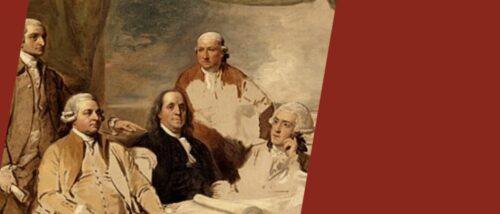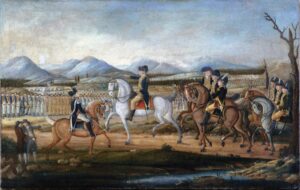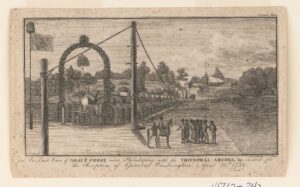
American Independence Begins on Favorable Terms: Continental Congress Ratifies the Treaty of Paris
This day, in a sense, marks the anniversary of the beginning of American independence. While the American Revolution ended with the surrender of Lord Cornwallis to General George Washington at Yorktown, on October 19, 1781, the treaty that settled the new relationship between Britain and its former colonies was ratified by the Confederation Congress on January 14, 1784. (It had been signed in Paris on September 3, 1783.) The treaty’s provisions
- set the boundary lines of the territory conceded by Britain to the US as extending west to the Mississippi River and north and south to include the former colonies;
- granted fishing rights to both the US and British Canada in the Grand Banks off the coast of Newfoundland and in the Gulf of Saint Lawrence;
- required that war debts to both British and US creditors be repaid;
- recommended provisions by which American Loyalists might recover property confiscated during the Revolution, while barring any future confiscations from Loyalists;
- allowed for the free navigation of the Mississippi River by both British subjects and American citizens.
Professor Robert M. S. McDonald, in his core document collection The American Revolution, explains that negotiators for the US – Benjamin Franklin (then US Ambassador to France), Henry Laurens, John Adams, and John Jay – could obtain favorable terms in the Treaty of Paris due to the more pressing strategic issues Britain faced vis-à-vis the other powers in Europe. Negotiations between Britain and America took place as the British negotiated with the French to end the Bourbon War (1778-1783).
Although the Continental Congress instructed Franklin to work closely with their ally, France, Franklin used his considerable diplomatic skills in another direction. “Sensing that Britain feared a strong United States less than it did a strengthened France and Spain,” McDonald writes, Franklin and his American team worked out the details of the treaty with the British. They did their job so well that Richard Oswald, who headed the British delegation until the final month of the talks, was forced to resign from this post after the details of the treaty were revealed to the British public. Yet other British leaders involved in the negotiations intended for the treaty to be generous, so as to facilitate a profitable trading relationship between Britain and the new nation.



